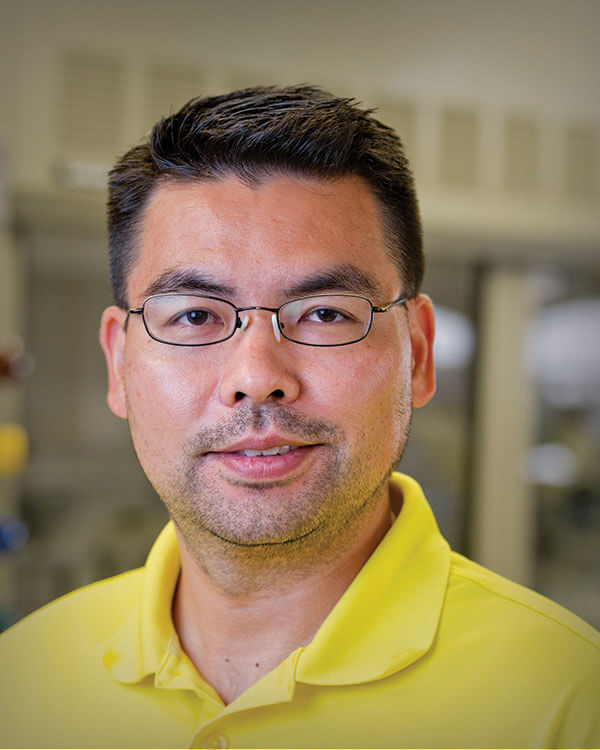Masaru K. Kuno

Professor of Chemistry & Biochemistry
Contact
110 Stepan Chemistry Hall
mkuno@nd.edu
574-631-0494
http://kuno.crc.nd.edu/
Research Cluster
The Kuno group has been involved in conducting single molecule imaging experiments of inorganic fluorophores used in biological imaging applications. Recent work has centered on understanding the optical response of colloidal quantum dots, which are new nanoscale materials which exhibit photophysical properties superior to those of existing organic fluorophores. In particular, desirable properties of quantum dot fluorophores include large absorption cross sections, enhanced photostability under illumination, and the ability to conduct multiplexed imaging experiments using different nanocrystal sizes. One unusual property of colloidal quantum dots, however, is their apparent fluorescence intermittency under illumination. This is seen as emission from individual quantum dots turning in a seemingly random fashion under continuous illumination. Despite much work done to understand the phenomenon, no consensus exists as to the actual blinking mechanism. The Kuno group has therefore worked on developing a deeper understanding of the phenomenon by conducting detailed blinking studies in quantum dot and other related nanoscale systems.
Publications
- "Fluorescence Intermittency Originates from Reclustering in Two Dimensional Organic Semiconductors" Ruth, A.; Hayashi, M.; Zapol, P.; Si, J.; McDonald, M.P.; Morozov, Y.V.; Kuno, M.; Janko, B. Nature Comm. 2017, 8, 14521.
- "Heterogeneous fluorescence intermittency in single layer reduced graphene oxide" Si, J.; Volkan-Kacso, S.; Eltom, A.; Morozov, Y.; McDonald, M.P.; Kuno, M.; Janko, B. Nano Lett. 2015, 15, 4317.
- "Direct observations of hetergeneous single layer graphene oxide reduction kinetics" McDonald, M.P.; Eltom, A.; Vietmeyer, F.; Thapa, J.; Morozov, Y.; Sokolov, D.; Hodak, J.; Vinodgopal, K.; Kamat, P.V.; Kuno, M. Nano Lett. 2013, 13, 5777.
- "Universal emission intermittency in quantum dots, nanorods, and nanowires" Frantsuzov, P.; Kuno, M.; Janko, B.; Marcus, R.A. Nature Phys. 2008, 4, 519.